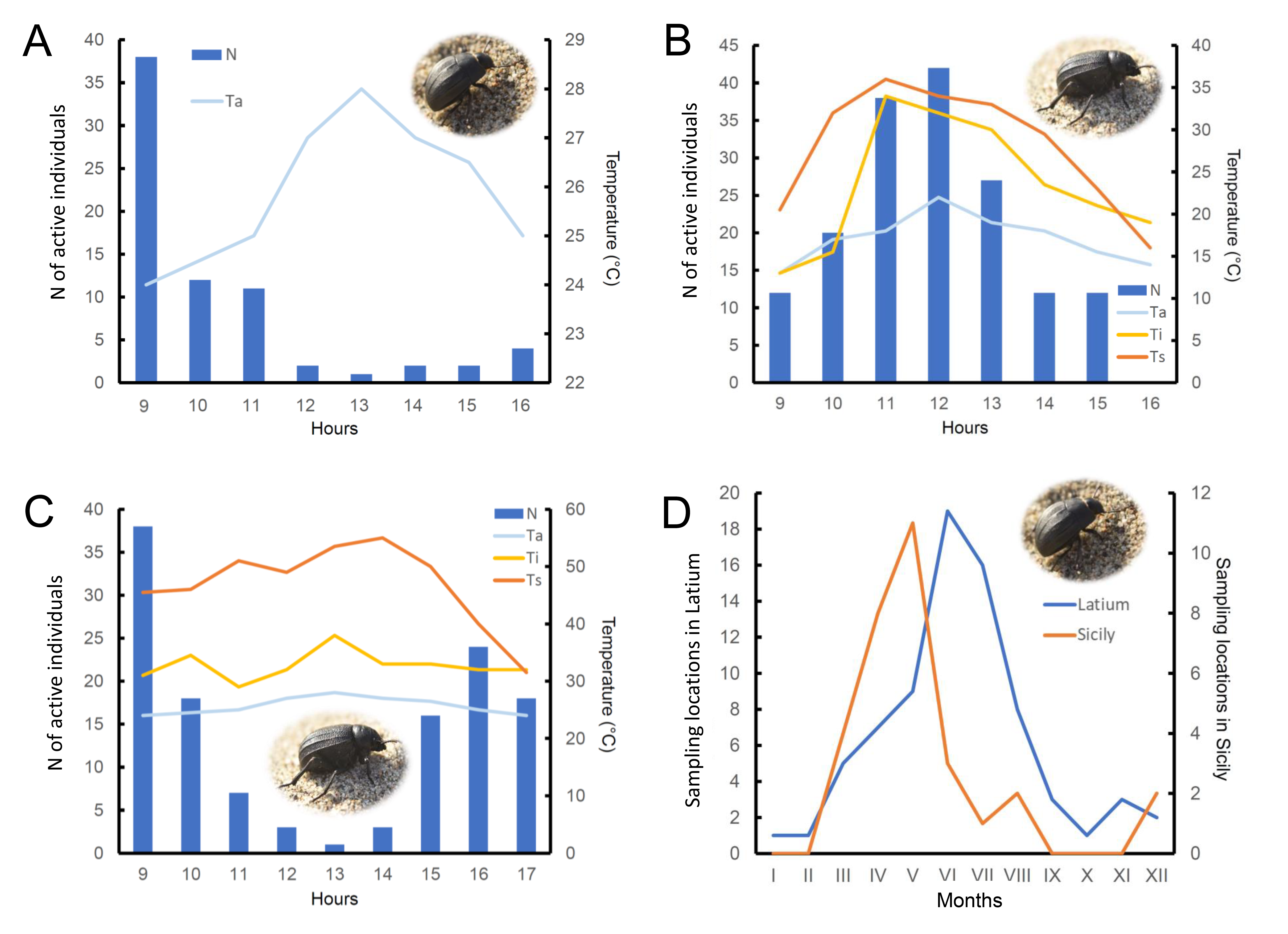Adaptations of tenebrionid beetles to Mediterranean sand dune environments and the impact of climate change (Coleoptera: Tenebrionidae)
DOI:
https://doi.org/10.13133/2284-4880/1496Keywords:
activity patterns, aridity, climate change, coast, darkling beetles, desert, thermoregulation, insectsAbstract
Tenebrionids represent a conspicuous component of the fauna of Mediterranean coastal dunes showing particular adaptations to the extreme climatic conditions of these environments (high temperature and aridity). These adaptations involve, for example, distinct morphological traits (such as long legs and subelytral cavity), finely tuned life cycles, ecological specialization, and diel and seasonal activity patterns that vary in response to temperature changes. Although these species are able to cope with high temperature and water scarcity, the ongoing climatic change may represent a serious threat. Increases in average temperatures and in frequency and severity of extreme events may affect profoundly species that already live close to their upper climatic tolerance limits. Tenebrionids in Mediterranean sand dunes are also flightless: although flightlessness is advantageous in this type of environment, it reduces substantially dispersal capabilities, and hence the possibility of tracking suitable climatic conditions. In fact, because of their adaptations to sand substrates and the limited extension of sandy shores, these animals are strictly confined to environments that are experiencing a dramatically fast increase in average temperature with no possibility to escape.
Downloads

Downloads
Published
How to Cite
Issue
Section
License
Copyright (c) 2023 Simone Fattorini

This work is licensed under a Creative Commons Attribution-NonCommercial-ShareAlike 4.0 International License.




